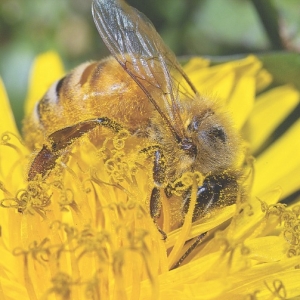It found bees consuming pollen tainted with some commonly used fungicides were more likely to succumb to gut parasite Nosema (see sidebar) than those given clean pollen.
“Honey bees that were fed pollen that contained the fungicide chlorothalonil… were almost three times more likely to become infected when exposed to the parasite Nosema, compared with control bees,” says study author Jeff Pettis, research leader of ARS’ Bee Research Laboratory, Beltsville, Maryland.
The fungicide pyraclostrobin (as in Comet) was found less frequently in the pollen samples, but also increased bees’ susceptibility to Nosema infection.
The pollen samples were collected from honey bees pollinating apples, watermelons, pumpkins, cucumbers, blueberries or cranberries.
The pollen was analysed to determine how much fungicide, insecticide, miticide and/or herbicide the bees were exposed to while pollinating each of the six crops.
In many cases, the pollen that bees brought back came primarily from plants other than the targeted crop. Some pollen samples contained very few pesticides, but the average number seen in a pollen sample was nine different pesticides, which could include insecticides, herbicides, miticides and fungicides.
However, fungicides were the most frequently found chemical substances, and chlorothalonil, which is widely used on apples and other crops in the US and New Zealand, the most common among those.
The most common miticide was fluvalinate, which beekeepers use to control varroa mites. Neonicotinoid insecticides were only found in pollen from bees foraging on apples.
“Our study highlights the need to closely look at fungicides and bee safety, as fungicides currently are considered safe and can be sprayed during the bloom on many crops,” says report co-author Dennis van Engelsdorp with the University of Maryland.
“We also need to better understand how pesticides are getting into the hive. Clearly it is not just from collecting pollen from the crops that bees are being used to pollinate.”
Pettis says the findings, published last month in online journal Plos One, provide new information useful in understanding the myriad problems affecting honey bees in the United States, including colony collapse disorder, dwindling honey bee colonies, and other health problems in managed bee colonies.









